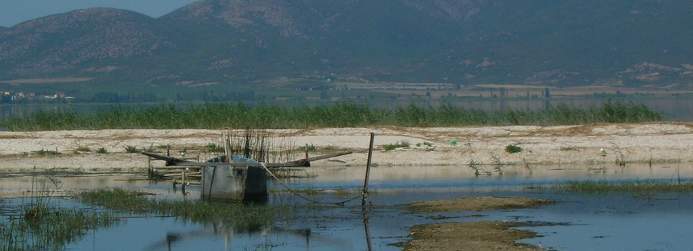If you are interested in accessing articles related to a specific GWP region, please select a region from the left hand side of the page.

Archive
This is the full archive of news articles and reports on GWP activities around the world.

This is the full archive of news articles and reports on GWP activities around the world.
If you are interested in accessing articles related to a specific GWP region, please select a region from the left hand side of the page.
GWP Bangladesh has developed a flood risk management framework for Dhaka city, focusing on urban flooding in the north of the city. The study synthesized information from previous plans, programmes, reports and the scientific literature.
Although an IWRM approach was incorporated into the development of the new Rajasthan State Water Policy in 2010, it quickly became clear that few stakeholders had a clear understanding of how it worked. Now, GWP India and their NGO Partner, Jheel Sanrakshan Samiti, have created a better understanding of the IWRM approach by involving all stakeholders in a capacity building programme, enabling them to take the lead in the planning and management of water resources in the state.
Under the guidance of GWP Pakistan, the local water Partnership for the Nara canal in the lower Indus Basin launched a participatory programme to reduce poverty and improve agricultural productivity. This canal, the largest in Pakistan, irrigates 2 million acres (809,371 hectares) of land.
Focusing on six water-scarce islands in the Cyclades, Greece, one grey water system and 11 rainwater harvesting (RWH) systems were installed or repaired. The total installed capacity reached about 2.2 million litres with an estimated annual water yield of 4.42 million litres, benefiting 8,500 permanent inhabitants in small and isolated communities.
With a focus on the Buna/Bojana transboundary river (shared between Albania and Montenegro), a methodology is being developed that effectively links IWRM and ICZM (integrated coastal zone management). This work includes developing a joint IWRM/ICZM generic planning framework and working towards the launch, in 2012, of the joint IWRM/ICZM Plan for this specific transboundary basin.
To involve the private sector more in developing water infrastructure, GWP Mediterranean continued with national assessments and multi-stakeholder dialogues. These were run within the framework of MED EUWI and the GEF MedPartnership, and in close collaboration with the Organisation for Economic Cooperation and Development (OECD).
The Africa Water Facility review mission to Burundi has concluded that the IWRM planning process has achieved its purpose and has recommended financial support to implement the plan. The mission also decided to use its experience in Burundi as a building block for other countries in Eastern Africa and transboundary water management.
Experts on water, urban construction, science and technology, forestry and agriculture agreed at a recent meeting that plans for an urban water environment should focus on the optimal allocation of water resources, be adequately funded and have an operational management system. Such a system must also play a functional role in flood control.
Raising awareness among young people and their teachers about the vital importance of the Danube Basin is the main aim of the annual Danube Art Master competition. Each child and school in the basin, covering 19 European countries, is invited to create a threedimensional work of art from material found near water, such as plants, shells, mud, grass and waste.
In 2011, GWP Central America published an updated version of the Status of Water Resources in Central America, a compilation of data on water resources in Belize, Guatemala, El Salvador, Honduras, Nicaragua, Costa Rica and Panama. This publication presents advances and challenges in water resources management at country and regional level.